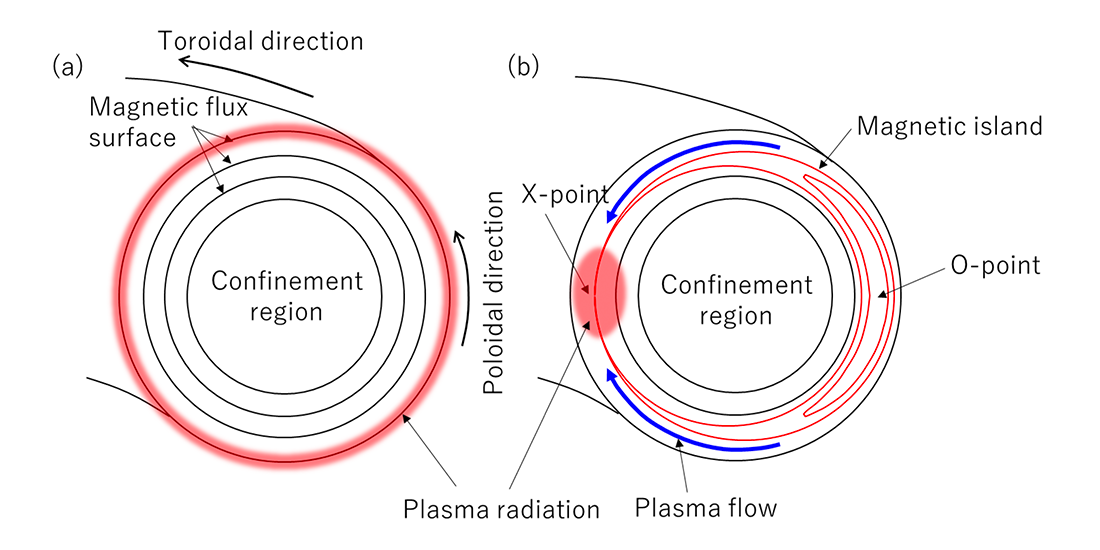Mechanism of plasma radiation concentration at “knot”of magnetic field lines
It has been reproduced in the newly developed simulation code that plasma radiation concentrates at the “knot”of the magnetic field lines, and its mechanism is recognized as the same as thermal condensation instability, which also occurs at star formation in the universe. The achievement advances the research on optimization and control of plasma radiation in future devices.

It has been reproduced in the newly developed simulation code that plasma radiation concentrates at the “knot”of the magnetic field lines, and its mechanism is recognized as the same as thermal condensation instability, which also occurs at star formation in the universe. The achievement advances the research on optimization and control of plasma radiation in future devices.
In a nuclear fusion reactor, high temperature plasma is confined by magnetic field lines. Since plasma moves very fast along them, the plasma is strongly affected by the magnetic field structure. This means that the plasma can be controlled by the magnetic field structure, and its optimization is studied in various devices. Especially, by applying the magnetic field with a specific wavelength (called a resonant magnetic perturbation field), one can change the magnetic topology significantly. As shown in the figure, the structure is called a magnetic island, which can be produced by a very small perturbation field, smaller than the confined magnetic field by 3 orders of magnitudes. The magnetic island exhibits a unique structure, X and O points, which is often appear in magnetically confined devices. In such a case, it is observed that plasma radiation is localized around the X-point in many experiments.
In the present study, in order to investigate the mechanism of the X-point radiation, a numerical simulation code has been newly developed. The magnetic field structure of the magnetic island is accurately incorporated in the simulation code, and the temporal evolution of plasma can be calculated. The simulation results show that there appears to be energy transfer from the O-point to the X-point, which also drives the plasma flow. The plasma flow accelerates the particles (impurity ions) that emit radiation towards the X-point, resulting in the X-point radiation. Since the radiation is a consequence of energy conversion of plasma to light, the X-point radiation leads to a cooling down of the plasma there.
As a result, it facilitates the energy transfer from the O-point to the X-point, and thus accelerates the flow toward the X-point. This process results in an increase of the plasma density at the X-point. Since the plasma radiation is proportional to the density, the process provides a feedback loop to enforce the X-point radiation and cooling. Such a mechanism is called thermal condensation instability, which is known to occur also when a star is formed in the universe. The present simulation study revealed that the same mechanism works in a nuclear fusion device and in the universe. It was also found that the time scale of the growth rate of the instability was of order of 10 ms, which depended on the plasma transport on the edge of the magnetic field structure.
The results provide an important insight into the magnetic field structure optimization and point toward future reactor design.
This work has been conducted in a collaboration between Dr. Masahiro Kobayashi at NIFS and Prof. M.Z. Tokar at Heinrich Heine University Duesseldorf.
The work was published on January 29, 2020 in Contributions to Plasma Physics, an international online journal on plasma physics.
